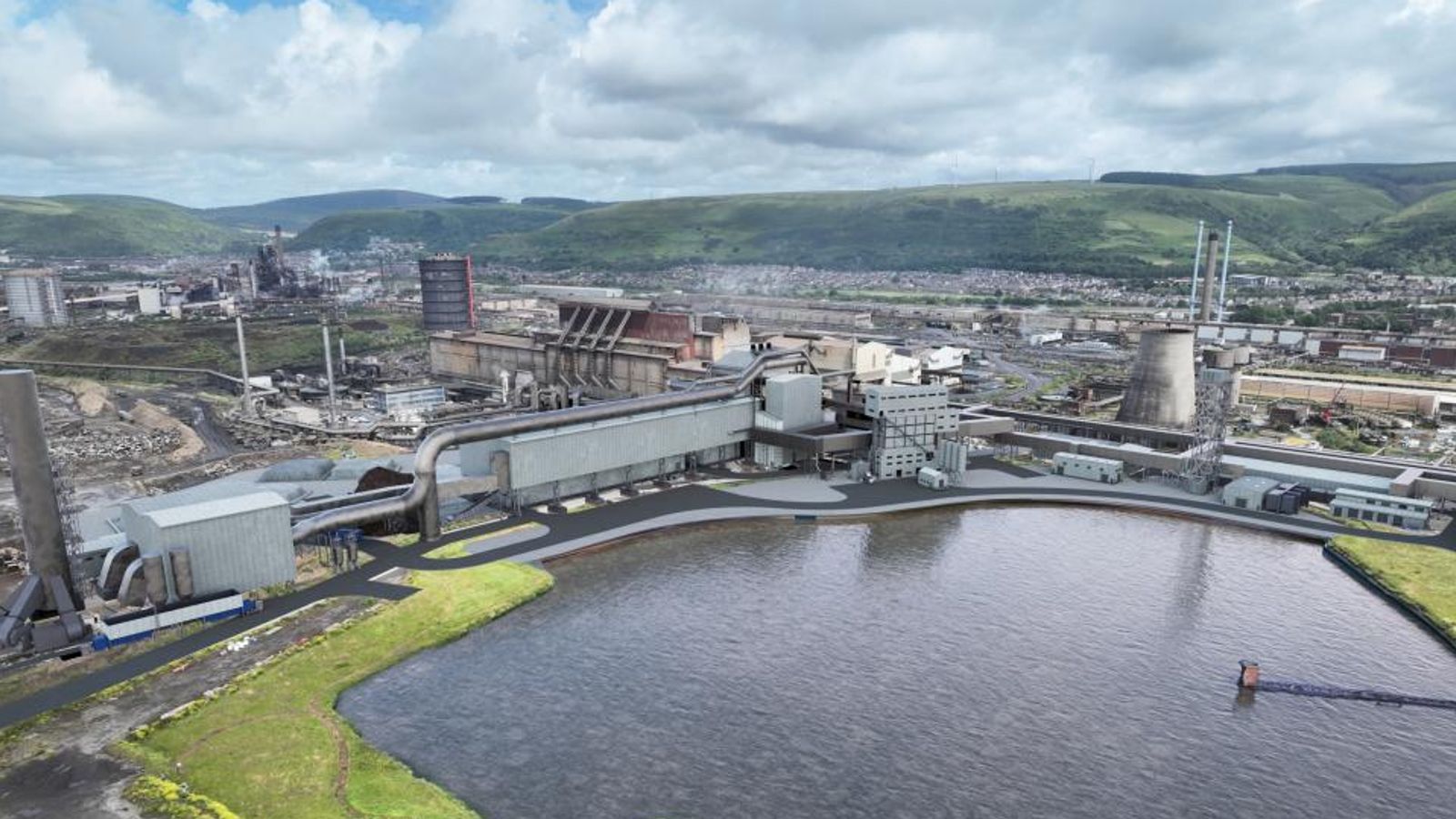U.K News
Tata Steel’s new electric arc furnace in Port Talbot given green light

A New Chapter for Steel Production in Port Talbot: Approval of the Electric Arc Furnace Project
Introduction to the Project and Its Significance
In a landmark decision, the Neath Port Talbot Council’s planning committee has given the green light to Tata Steel’s ambitious plan to construct a new electric arc furnace (EAF) at its Port Talbot site. This approval marks a pivotal moment in the steel industry’s journey toward sustainability and modernization. The project, which is part of Tata Steel’s broader strategy to adopt greener production methods, signals a significant shift away from traditional blast furnace operations. The EAF technology is not only more environmentally friendly but also aligns with the UK’s net-zero goals.
The steelworks in Port Talbot, one of the largest in the UK, closed its two blast furnaces last year, resulting in the loss of nearly 3,000 jobs. However, Tata Steel has emphasized that this transition has saved around 5,000 jobs across its UK operations and reduced on-site CO2 emissions by a staggering 90%. The approval of the EAF project is a testament to the company’s commitment to balancing industrial growth with environmental responsibility.
The Investment and Its Implications
The new electric arc furnace represents a £1.25 billion investment, hailed by Tata Steel UK’s Chief Executive, Rajesh Nair, as "the most significant investment made in the UK steel industry in decades." This substantial financial commitment underscores the company’s confidence in the future of steelmaking in South Wales and its determination to lead the industry into a greener era. The EAF, expected to become operational by late 2027, will replace the outdated blast furnaces and set a new standard for sustainable steel production.
The project also entails the demolition of existing buildings and the construction of state-of-the-art facilities, paving the way for a modernized steelworks that prioritizes efficiency and sustainability. Tata Steel has pledged to begin large-scale work on the site this summer, demonstrating its readiness to act swiftly and bring this vision to life.
Environmental Benefits and the Path to a Greener Future
One of the most compelling aspects of the EAF project is its potential to drastically reduce carbon emissions. By transitioning away from blast furnaces, which are significant contributors to greenhouse gases, Tata Steel is taking a major step toward achieving its environmental goals. The 90% reduction in on-site CO2 emissions is a clear indication of the project’s alignment with the UK’s climate targets.
This shift also reflects the broader trends in the steel industry, which is under increasing pressure to decarbonize. Electric arc furnaces, unlike traditional blast furnaces, can run on electricity from renewable sources, offering a cleaner alternative for steel production. As the UK strives to meet its net-zero goals by 2050, projects like this are essential for maintaining industrial competitiveness while reducing environmental impact.
Job Impacts and Community Response
While the closure of the blast furnaces led to nearly 3,000 job losses, Tata Steel has highlighted that 5,000 jobs across its UK operations have been preserved as a result of this transition. This balance of job losses and savings underscores the complexities of industrial transformation. The EAF project is expected to create new opportunities in skilled trades and modern manufacturing, offering a lifeline to the local workforce.
The approval of the project has been met with optimism from the local community, which has long been dependent on the steel industry for employment. While concerns about job losses remain, there is a growing recognition that this transition is necessary to ensure the long-term viability of steelmaking in South Wales. The project has also been described as a "development of national strategic importance" in the supporting documents reviewed by the planning committee, emphasizing its relevance beyond the local level.
Political Support and the Future of Steelmaking in South Wales
The decision to approve the EAF project has been welcomed by key political figures, including Wales Secretary Jo Stevens, who described it as a "significant step forward" for the steel industry in South Wales. Stevens highlighted the importance of this project in providing clarity and certainty for Tata’s plans and for the future of steelmaking in the region.
This political backing is crucial as the UK steel industry navigates a challenging landscape marked by global competition, rising energy costs, and environmental regulations. The approval of the EAF project sends a strong signal that the government supports innovation and investment in this critical sector. As the UK continues to grapple with the challenges of industrial decarbonization, projects like this serve as a blueprint for how traditional industries can evolve while contributing to a sustainable future.
Conclusion: A Pivotal Moment for the Steel Industry
The approval of Tata Steel’s electric arc furnace project in Port Talbot is more than just a local planning decision; it represents a significant milestone in the UK steel industry’s journey toward sustainability. With a £1.25 billion investment, a 90% reduction in CO2 emissions, and the preservation of thousands of jobs, this project offers a vision of steelmaking that is both environmentally responsible and economically viable.
While the road ahead will undoubtedly present challenges, particularly in terms of managing job losses and ensuring the success of this large-scale investment, the approval of the EAF project is a cause for optimism. It reflects a growing recognition that industrial progress and environmental stewardship are not mutually exclusive but can coexist to build a better future for generations to come. As Tata Steel begins large-scale work this summer, the eyes of the industry—and indeed the nation—will be on Port Talbot, watching closely as it embarks on this transformative chapter.


















